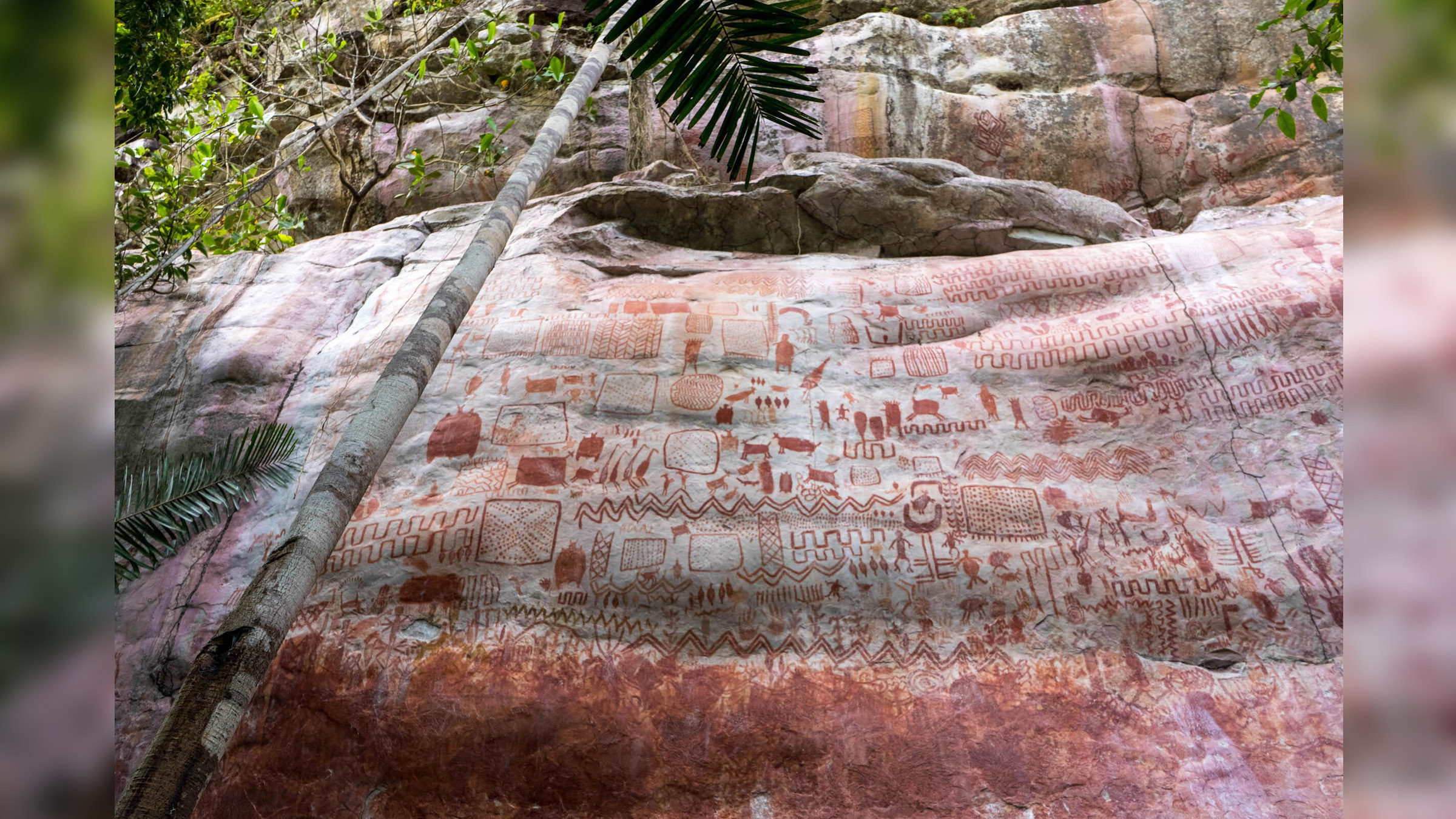The Rock Age: A Journey Through Time And Stone
Imagine stepping back in time to an era where stone was king. The Rock Age isn’t just about rocks; it’s about humanity’s earliest attempts to shape the world around them. This was a time when tools were crafted from stone, and every piece of rock had a purpose. Whether it was for hunting, building, or even art, stones played a crucial role in the development of human civilization.
So, what exactly was the Rock Age? It’s a period in prehistory that spans thousands of years, where humans relied heavily on stone tools and weapons. This age wasn’t just about survival; it was about innovation and creativity. People back then figured out how to turn hard, unyielding rocks into sharp blades, sturdy shelters, and even beautiful carvings.
Now, before we dive deeper, let’s talk about why the Rock Age matters. It’s not just some dusty chapter in history books. Understanding this period gives us insight into how our ancestors lived, thought, and adapted to their environment. It’s like peeking into the foundation of modern life. So, buckle up, because we’re about to explore an era that shaped the world as we know it.
- Lebt Steven Assanti Noch A Deep Dive Into His Life Career And Current Status
- Colleen Williams Net Worth Discovering The Real Story Behind Her Wealth
What Exactly Was the Rock Age?
Let’s break it down. The Rock Age, also known as the Stone Age, is divided into three main periods: the Paleolithic, Mesolithic, and Neolithic. Each of these periods represents a significant step forward in human development. But here’s the kicker—these periods weren’t neatly boxed. They overlapped in different parts of the world, depending on geography and resources.
In the Paleolithic era, humans were primarily hunter-gatherers. Tools were simple, like hand axes and scrapers. Fast forward to the Mesolithic, and things started getting more refined. People began experimenting with smaller, more specialized tools. Finally, the Neolithic brought about the rise of agriculture and permanent settlements. It was a game-changer.
Here’s a fun fact: the Rock Age lasted way longer than you might think. It stretched from about 3.3 million years ago to around 3,000 BCE. That’s a massive chunk of time! And throughout this period, humans kept evolving, learning, and adapting. It’s like watching a slow-motion movie of human progress.
- Adam Levine Divorce The Inside Story You Need To Know
- Sketch Leaks What You Need To Know About This Digital Design Controversy
Key Innovations of the Rock Age
Now, let’s talk about some of the coolest innovations from the Rock Age. Sure, stone tools might not sound as exciting as smartphones, but back then, they were revolutionary. Imagine trying to hunt a mammoth with your bare hands. Not gonna happen, right? That’s where stone tools came in.
One of the most significant inventions was the hand axe. These bad boys were multipurpose tools used for everything from chopping wood to butchering animals. Then there were microliths, tiny stone blades that could be attached to wooden shafts to make spears or arrows. It was like early humans saying, “Hey, we can make this better!”
And let’s not forget about art. Cave paintings from the Rock Age are some of the earliest examples of human creativity. Think about it—people were expressing themselves through art tens of thousands of years ago. It shows that even back then, humans had a desire to communicate and tell stories.
Stone Tools: The Original Swiss Army Knife
Stone tools weren’t just practical; they were downright ingenious. Early humans figured out how to shape stones into all kinds of useful objects. For example, scrapers were used to clean animal hides, while drills were used to make holes in materials like wood or bone. It’s like they had a whole toolkit made out of rocks.
And here’s the thing—these tools weren’t one-size-fits-all. Different regions developed their own styles and techniques based on the types of stone available. In some areas, flint was the go-to material because it could be easily shaped into sharp edges. In others, obsidian was the star of the show because of its glass-like quality.
Life in the Rock Age
What was daily life like during the Rock Age? Well, it wasn’t all sunshine and roses. Life was tough, and survival was the name of the game. Humans had to contend with harsh climates, dangerous predators, and limited resources. But they were resourceful, and that’s what set them apart.
Hunter-gatherer societies were the norm during this period. People lived in small groups, moving from place to place in search of food and shelter. They hunted animals, gathered plants, and fished in rivers and lakes. It was a nomadic lifestyle that required a lot of skill and knowledge about the natural world.
But life wasn’t all about work. There’s evidence to suggest that early humans engaged in social activities, like sharing meals and telling stories around the fire. These moments of connection were probably crucial for building strong communities and passing down knowledge from generation to generation.
Shelter and Clothing
When it comes to shelter, early humans were pretty creative. They used whatever materials were available to build homes. In some cases, they lived in caves, which provided natural protection from the elements. In other cases, they constructed simple huts using wood, animal hides, and even mud.
Clothing was another important aspect of life. Animal skins were the primary material used for making clothes. These skins were not only practical but also symbolic. They could indicate status, tribe affiliation, or even spiritual beliefs. It’s like early humans were saying, “This is who we are.”
The Role of Stone in Art and Culture
Art and culture were alive and well during the Rock Age. Cave paintings, carvings, and sculptures were all part of the creative expression of early humans. These works of art weren’t just for decoration; they often held deep spiritual significance.
One of the most famous examples of Rock Age art is the cave paintings in Lascaux, France. These paintings depict animals, humans, and abstract symbols. Scientists believe they were created as part of rituals or ceremonies. It’s like early humans were trying to communicate with the spiritual world through their art.
And let’s not forget about jewelry. Stone beads and pendants were popular accessories during this time. They were often used as status symbols or as part of religious practices. It’s a reminder that even in prehistoric times, people cared about how they looked and what they represented.
Religious Beliefs and Rituals
Religion played a big role in the lives of early humans. Many Rock Age artifacts suggest that people believed in spirits, gods, or other supernatural forces. They performed rituals to honor these beings and seek their favor. It was their way of making sense of the world around them.
Some of the most fascinating artifacts from this period are fertility figurines, like the Venus of Willendorf. These small statues are thought to represent fertility and abundance. They were probably used in rituals related to childbirth or agriculture. It’s like early humans were saying, “We need your help to thrive.”
The Transition to Agriculture
As the Rock Age progressed, humans began to settle down and develop agriculture. This shift marked the beginning of the Neolithic Revolution, one of the most significant turning points in human history. Instead of constantly moving to find food, people started growing crops and raising animals. It was a game-changer.
But this transition didn’t happen overnight. It took thousands of years for agriculture to spread across the globe. And even then, it wasn’t without its challenges. Early farmers had to learn how to cultivate plants, domesticate animals, and adapt to changing climates. It was a lot of trial and error.
Despite these challenges, the benefits of agriculture were clear. It allowed for the growth of larger, more stable communities. It also led to the development of new technologies, like pottery and weaving. It was like humanity was leveling up.
The Rise of Settlements
With the advent of agriculture came the rise of permanent settlements. These early villages were the precursors to modern cities. They provided a stable base for people to live, work, and trade. It was a whole new way of life.
One of the earliest known settlements is Çatalhöyük in modern-day Turkey. This Neolithic town was home to thousands of people and featured houses made of mudbrick. It’s a testament to the ingenuity and adaptability of early humans. It’s like they were saying, “We can do this.”
The Legacy of the Rock Age
The Rock Age may be long gone, but its legacy lives on. Many of the skills and technologies developed during this period laid the foundation for modern civilization. From stone tools to agriculture, the innovations of the Rock Age shaped the world we live in today.
And let’s not forget about the cultural contributions. The art, music, and rituals of the Rock Age continue to inspire us. They remind us of our shared history and the enduring human spirit. It’s like a bridge connecting us to our ancestors.
So, the next time you pick up a rock, take a moment to think about its history. It might just be a piece of the Rock Age, waiting to tell its story. And who knows? Maybe you’ll discover something amazing.
Lessons from the Past
There’s a lot we can learn from the Rock Age. For one, it shows us the importance of adaptability. Early humans faced countless challenges, but they never gave up. They kept innovating and finding new ways to survive. It’s a lesson we can all apply to our own lives.
It also reminds us of the power of community. Life in the Rock Age wasn’t easy, but people banded together to overcome obstacles. They shared knowledge, resources, and support. It’s a reminder that we’re stronger together.
Conclusion: The Rock Age in Perspective
In conclusion, the Rock Age was a fascinating period in human history. It was a time of innovation, creativity, and resilience. From stone tools to agriculture, the achievements of this era laid the groundwork for modern civilization.
So, what can we take away from all this? First, appreciate the ingenuity of our ancestors. They figured out how to turn rocks into tools, shelters, and works of art. Second, embrace the power of community. Like early humans, we’re stronger when we work together. And finally, never stop learning. The world is full of stories waiting to be discovered.
Now, it’s your turn. What do you think about the Rock Age? Leave a comment below and let’s keep the conversation going. And if you enjoyed this article, don’t forget to share it with your friends. Together, we can keep the spirit of discovery alive.
Table of Contents
- What Exactly Was the Rock Age?
- Key Innovations of the Rock Age
- Stone Tools: The Original Swiss Army Knife
- Life in the Rock Age
- Shelter and Clothing
- The Role of Stone in Art and Culture
- Religious Beliefs and Rituals
- The Transition to Agriculture
- The Rise of Settlements
- The Legacy of the Rock Age
- Lamine Yamal Brother The Untold Story Of Family Fame And Legacy
- Pixar Moms The Heartwarming Stories Behind Pixars Mom Characters

The Silicon Tribesman • Stone Age and Bronze Age rock art in...

Sprawling 8milelong 'canvas' of ice age beasts discovered hidden in

The Perfect Age of Rock 'n' Roll Mega Sized Movie Poster Image IMP